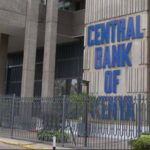KESONIA, or the Kenya Shilling Overnight Interbank Average, is a benchmark interest rate that captures the average rate at which Kenyan banks lend and borrow unsecured funds overnight in Kenyan Shillings. Administered by the Central Bank of Kenya (CBK), KESONIA serves as a risk-free reference rate due to its focus on short-term, unsecured interbank transactions, which carry minimal credit or term risk.
Unlike other rates that may incorporate longer-term or credit-related risks, KESONIA is calculated daily based on actual transactions, providing a transparent and reliable indicator of liquidity conditions in Kenya’s interbank market. This benchmark is integral to variable rate loans, financial product pricing, and monetary policy frameworks, ensuring alignment with international standards like the Sterling Overnight Index Average (SONIA) in the UK and the Secured Overnight Financing Rate (SOFR) in the US.
Key Features of KESONIA
- Transaction-Based: Derived from real overnight interbank lending transactions.
- Risk-Free: Reflects minimal credit or term risk, making it a stable benchmark.
- Daily Publication: Published daily by the CBK on its website and through market data feeds.
- Volume-Weighted: Calculated as a volume-weighted average to ensure accuracy.
Is KESONIA a New Rate?
Contrary to what some might assume, KESONIA is not a new rate. It is a formal renaming of the existing overnight interbank average rate, with no changes to its underlying methodology. The CBK introduced the KESONIA nomenclature to enhance clarity and align with global benchmark reform practices. This rebranding mirrors international efforts to standardize risk-free rates, ensuring consistency with benchmarks like SONIA and SOFR.
The methodology remains unchanged: KESONIA continues to be calculated as a volume-weighted average of overnight interbank transactions. This continuity ensures that historical data and existing systems remain relevant, with the primary change being the adoption of a globally recognizable name.
Why Was the Name Changed?
The transition to KESONIA reflects Kenya’s commitment to adopting international best practices in financial benchmarking. The name change serves several purposes:
- Global Alignment: By adopting a name similar to SONIA and SOFR, KESONIA positions Kenya’s financial system within a globally recognized framework, enhancing its appeal to international investors.
- Clarity and Identity: The term “KESONIA” provides a clear, distinct identity for Kenya’s risk-free rate, distinguishing it from other local rates like the Central Bank Rate (CBR).
- Benchmark Reform: The shift aligns with global reforms to replace less reliable benchmarks (e.g., LIBOR) with transaction-based, risk-free rates, fostering transparency and reliability.
This rebranding is part of a broader effort to modernize Kenya’s financial infrastructure, paving the way for innovations like KESONIA-linked financial products and a potential domestic derivatives market.
How is KESONIA Calculated?
KESONIA is calculated as a volume-weighted average of all overnight interbank lending transactions in Kenyan Shillings. The process involves:
- Data Collection: The CBK gathers data on all unsecured overnight loans between commercial banks.
- Volume Weighting: Each transaction’s interest rate is weighted by the volume of funds transacted.
- Aggregation: The weighted rates are averaged to produce the daily KESONIA rate.
- Publication: The final rate is published daily on the CBK’s website and included in market data feeds.
This methodology ensures that KESONIA accurately reflects the cost of overnight borrowing in the interbank market, providing a robust benchmark for financial institutions and policymakers.
Does KESONIA Affect Calculation Methods?
The adoption of KESONIA does not alter the calculation of the overnight interbank weighted average rate. The methodology remains consistent, ensuring a seamless transition for banks, borrowers, and financial systems. The focus on actual transactions rather than estimates or surveys enhances KESONIA’s reliability as a benchmark.
Understanding KESONIA Compounded in Arrears
KESONIA compounded in arrears refers to a method of calculating interest by compounding the daily KESONIA rate over a specified interest period. This approach is commonly used for variable rate loans and financial products tied to overnight rates. Here’s how it works:
- Daily Rates: The KESONIA rate is recorded daily for each business day in the interest period.
- Compounding: The daily rates are compounded to calculate the total interest accrued over the period.
- Arrears Payment: Interest is calculated and applied at the end of the period, based on the compounded rate.
This method ensures that interest payments reflect actual market conditions over the loan term, offering transparency and fairness for borrowers and lenders.
Example of KESONIA Compounded in Arrears
Suppose a borrower takes a variable rate loan with a 30-day interest period. The daily KESONIA rates are compounded over these 30 days, and the final interest payment is calculated based on the cumulative rate. This approach is particularly useful for floating-rate loans and interest rate swaps.
Will KESONIA Be the Only Rate in Use?
KESONIA is the primary benchmark for variable rate loans denominated in Kenyan Shillings, except for:
- Foreign Currency Loans: These may use international benchmarks like SOFR or EURIBOR.
- Fixed Rate Loans: These are not tied to KESONIA, as they have predetermined interest rates.
In cases where KESONIA is not practical (e.g., for certain loan structures), the Central Bank Rate (CBR) serves as an alternative reference rate. The CBR, set by the CBK’s Monetary Policy Committee, acts as a fallback to ensure continuity in pricing and lending.
Fallback Provisions
If KESONIA data is unavailable due to market disruptions or other issues, contracts should include provisions to fall back to the CBR. This contingency ensures that financial agreements remain operational even in exceptional circumstances.
Is KESONIA a Risk-Free Rate?
Yes, KESONIA is considered a risk-free rate (RFR) because it reflects overnight, unsecured lending among banks, which carries minimal credit or term risk. Unlike longer-term rates that may incorporate credit risk premiums, KESONIA’s short-term nature and reliance on actual transactions make it a stable and reliable benchmark.
This risk-free status aligns KESONIA with global RFRs like SONIA and SOFR, which are widely used in financial markets for pricing loans, derivatives, and other instruments.
Implications for Contracts and Systems
The transition to KESONIA requires updates to contracts, systems, and documentation to reflect the new naming convention. Key actions include:
- Internal Documentation: Banks must revise loan agreements, pricing models, and internal policies to reference KESONIA instead of the previous overnight rate.
- System Updates: Financial institutions need to update software and data feeds to incorporate KESONIA.
- Legal Agreements: Existing contracts must be amended to align with the KESONIA framework, particularly for variable rate loans.
Transition Timeline
- New Loans: The revised Reference Rate and Computation Pricing Methodology (RBCPM) takes effect for all new variable rate loans from September 1, 2025.
- Existing Loans: A six-month transition period allows banks to update existing variable rate loans, with full adoption required by February 28, 2026.
These updates ensure that Kenya’s financial systems remain compliant with the new framework while minimizing disruptions for borrowers and lenders.
Broader Implications of Adopting KESONIA
The adoption of KESONIA has far-reaching implications for Kenya’s financial sector, supporting economic stability and growth. Key impacts include:
- International Alignment: KESONIA positions Kenya as a modern, globally compliant financial market, attracting foreign investment and enhancing credibility.
- Financial Innovation: The benchmark lays the foundation for KESONIA-linked financial products, such as bonds, loans, and derivatives, fostering a more dynamic financial market.
- Derivatives Market Development: A robust RFR like KESONIA supports the creation of a domestic derivatives market, enabling better risk management for businesses and investors.
- Monetary Policy Effectiveness: KESONIA provides the CBK with a reliable tool to monitor and influence liquidity conditions, supporting effective monetary policy.
Economic Context
Kenya’s economy has shown resilience, with the Kenyan Shilling maintaining stability against the US dollar at around KSh 129.20–129.29 in recent reports. The CBK’s foreign exchange reserves, equivalent to 4.6–4.9 months of import cover, further bolster confidence in KESONIA’s stability. These reserves, combined with strong inflows from diaspora remittances (KSh 56.93 billion in May 2025) and exports like tea and coffee, support the shilling’s strength and KESONIA’s reliability as a benchmark.
Where is KESONIA Published?
KESONIA is published daily by the Central Bank of Kenya on its official website (www.centralbank.go.ke) and included in relevant market data feeds and reports. This transparency ensures that banks, businesses, and investors have access to real-time data for decision-making.
KESONIA and the Kenyan Money Market
The interbank market, where KESONIA is derived, plays a critical role in Kenya’s financial system. Recent data from the CBK indicates that the average interbank rate fluctuated between 9.67% and 13.14% in 2025, reflecting varying liquidity conditions. For example:
- June 26, 2025: The interbank rate was 9.73%, with an average transaction volume of KSh 21.7 billion.
- April 3, 2025: The rate was 10.68%, with a lower transaction volume of KSh 6.8 billion.
- July 18, 2025: The rate rose to 13.14%, with a higher volume of KSh 33.2 billion.
These fluctuations highlight the dynamic nature of the interbank market, with KESONIA providing a stable benchmark amidst varying transaction volumes and liquidity conditions.
Challenges and Risks
While KESONIA’s adoption is a positive step, potential challenges include:
- Transition Costs: Updating systems and contracts may involve significant costs for banks and businesses.
- Market Awareness: Ensuring that borrowers and businesses understand KESONIA’s implications requires robust communication from the CBK and financial institutions.
- Global Volatility: External factors, such as US interest rate hikes or trade tariffs, could impact the Kenyan Shilling and interbank liquidity, indirectly affecting KESONIA.
Future Outlook for KESONIA
Looking ahead, KESONIA is poised to play a transformative role in Kenya’s financial sector. The CBK’s commitment to maintaining foreign exchange reserves above the statutory four-month import cover threshold supports KESONIA’s stability. Additionally, the potential development of term rates based on KESONIA could further enhance its utility for longer-term financial products.
The Kenyan Shilling’s resilience, driven by strong export earnings and remittances, positions KESONIA as a reliable benchmark for both domestic and international stakeholders. As Kenya continues to modernize its financial infrastructure, KESONIA will be a cornerstone of innovation and stability.
Key Takeaways
- KESONIA Definition: A transaction-based, risk-free benchmark reflecting overnight interbank lending rates.
- Global Alignment: Aligns with international standards like SONIA and SOFR.
- Implementation Timeline: Effective for new loans from September 1, 2025, and existing loans by February 28, 2026.
- Economic Impact: Supports financial innovation, monetary policy, and investor confidence.
KESONIA represents a significant step forward for Kenya’s financial system, aligning it with global best practices while fostering transparency and stability. By providing a reliable, transaction-based benchmark, KESONIA supports variable rate loans, monetary policy, and the potential for innovative financial products. As Kenya navigates global economic challenges, KESONIA’s role in ensuring a robust and modern financial market cannot be overstated. Stay informed by checking the CBK’s daily KESONIA publications and exploring how this benchmark impacts your financial decisions.





